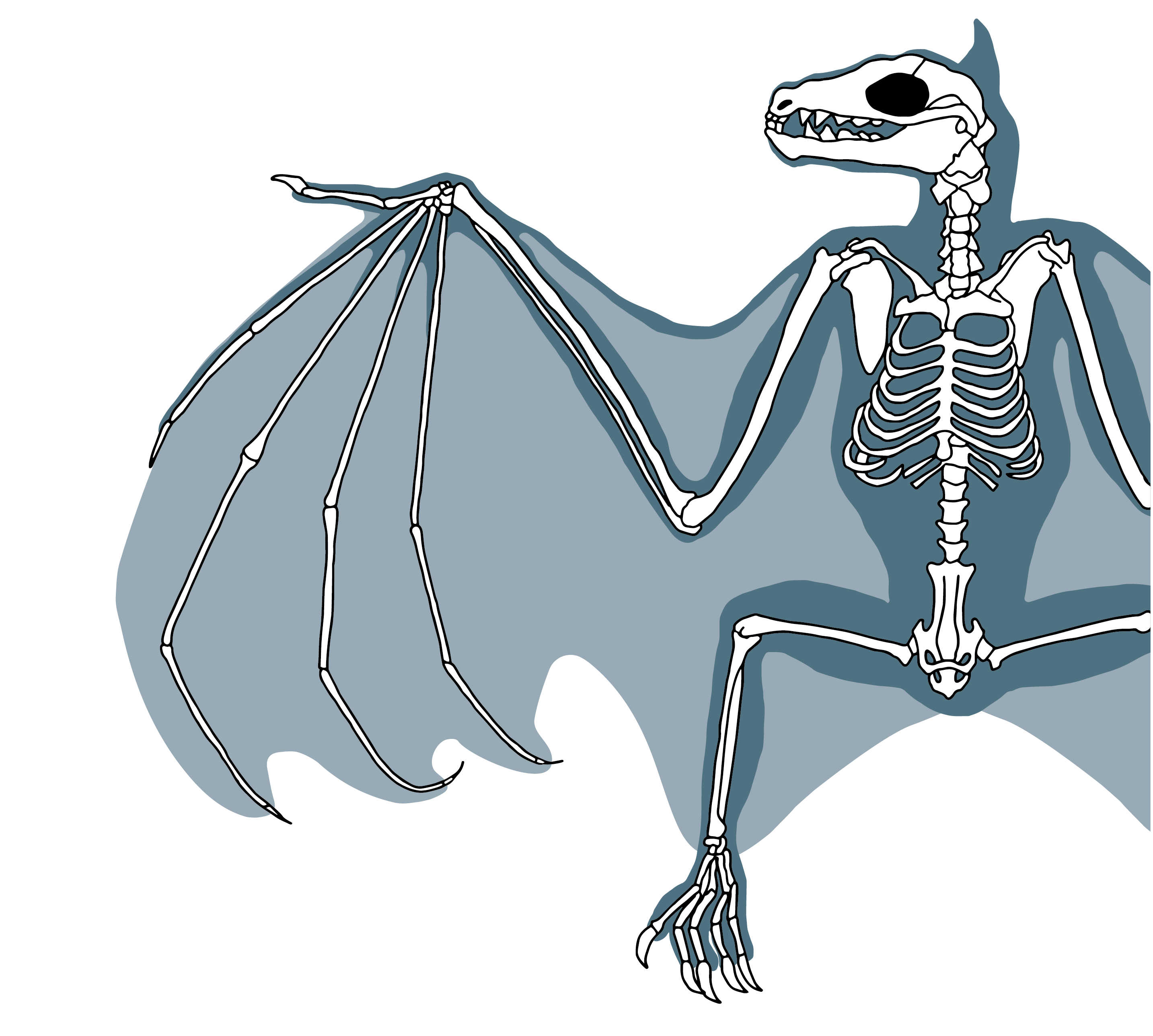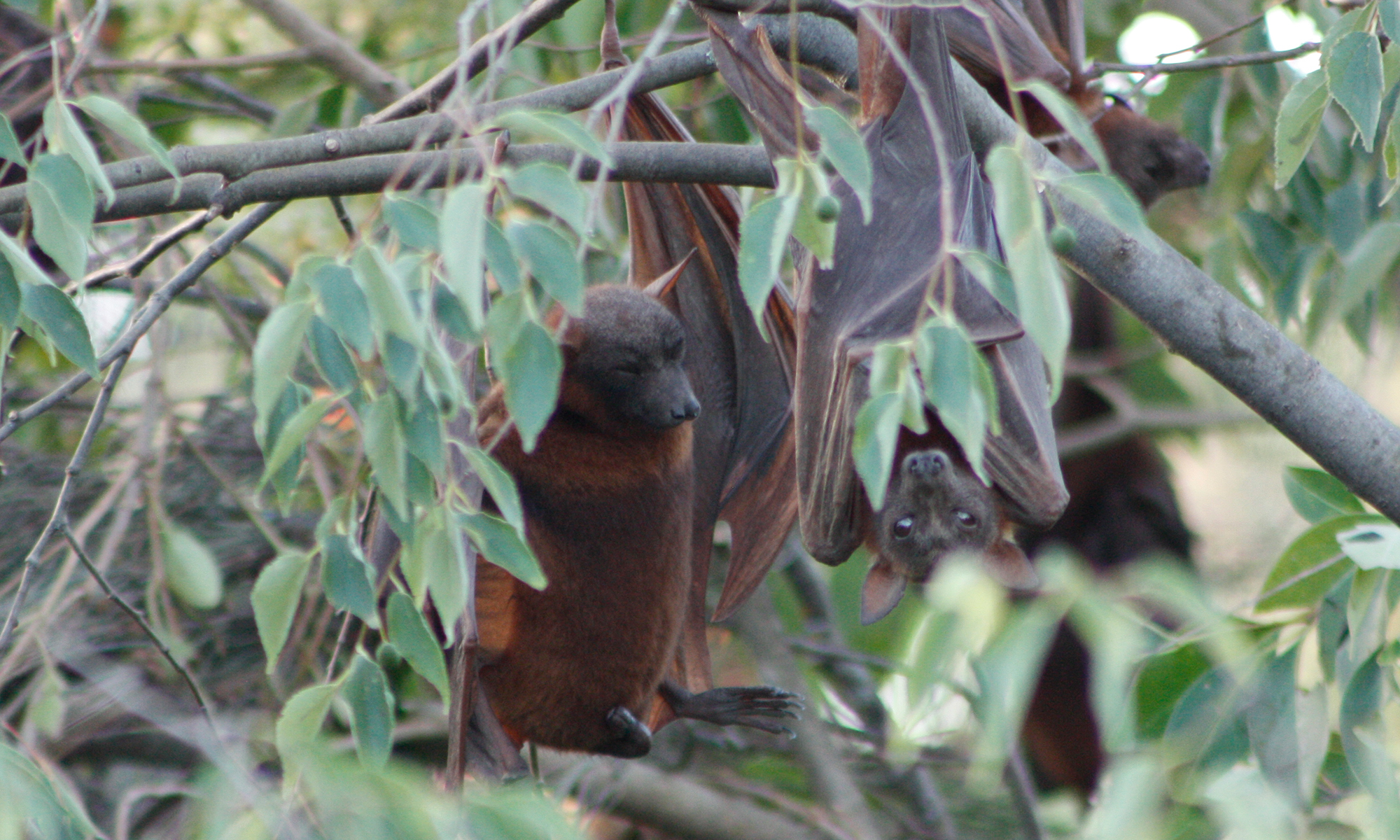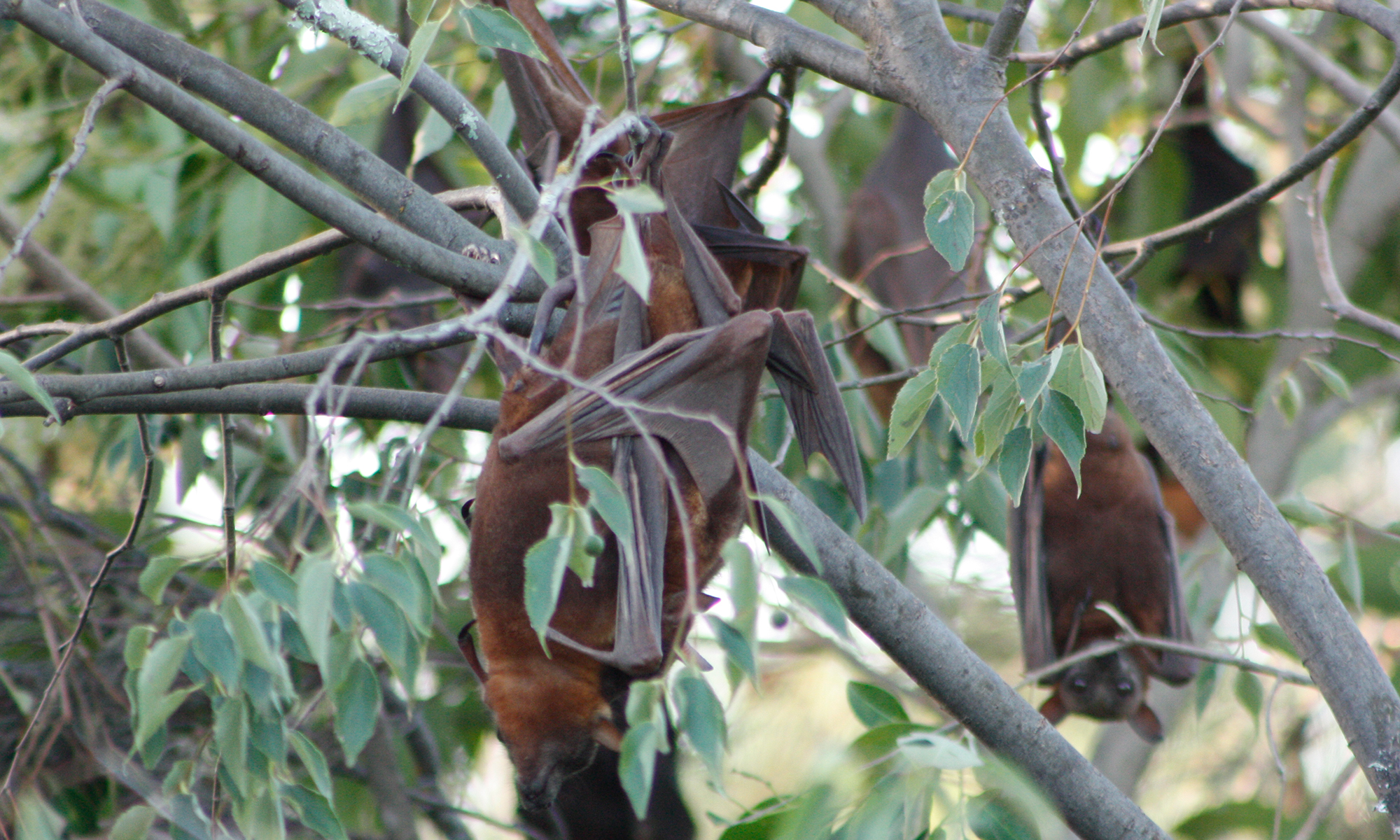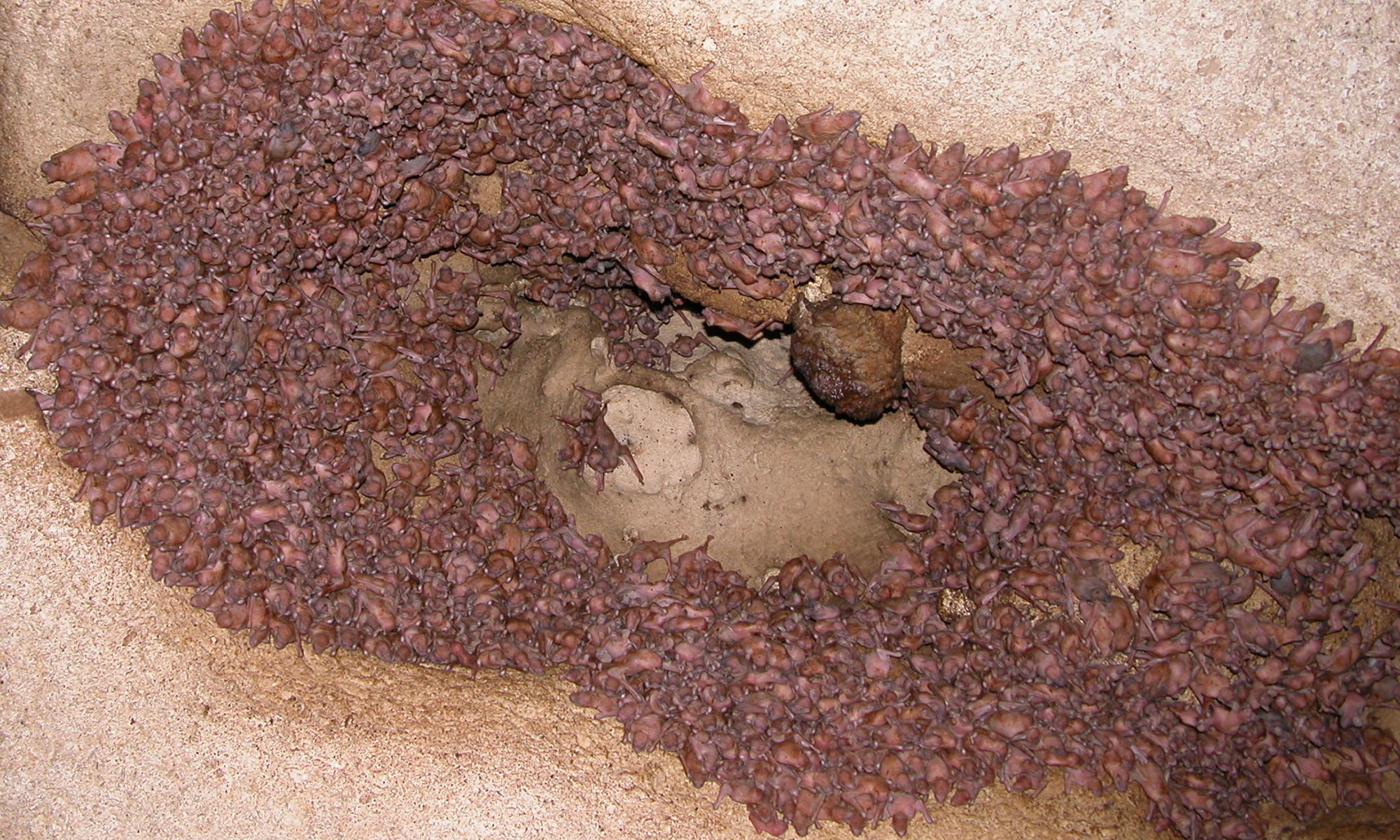Classification of Bats
All bats have been scientifically classified as part of the Order – Chiroptera. Chiroptera (pronounced “ky-rop-teh-rah”) means ‘hand-wing’ in Greek. Over millions of years, two sub-orders of bats have evolved, these are:
There has been a lot of debate over the years as to whether micro-bats and mega-bats evolved from different ancestors. Recent genetic evidence confirms that bats have evolved from the same genetic ancestor.
Scientists are continually reclassifying species based on the advancements in technology and scientific inquiry. There has been new research that suggests some of the micro-bat species should be reclassified as mega-bats. However, like all good science, this requires more research and results confirmed by multiple scientists.
Let’s take a closer look at the taxonomic structure/heirarchy in which bats are associated. The following two examples are based on the grey-headed flying-fox and the Gould’s wattled bat.
Grey-headed flying-fox
Kingdom: Animalia (Animals)
Phylum: Chordata (Possess a basic ‘backbone’)
Class: Mammalia (Mammals)
Order: Chiroptera (Bats)
Sub-Order: Megachiroptera (Mega-bats)
Family: Pteropodidae (Flying-foxes)
Genus: Pteropus
Species: poliocephalus
Gould’s wattled bat
Kingdom: Animalia (Animals)
Phylum: Chordata (Possess a basic ‘backbone’)
Class: Mammalia (Mammals)
Order: Chiroptera (Bats)
Sub-Order: Microchiroptera (Micro-bats)
Family: Verspertilionidae (Evening Bats)
Genus: Chalinolobus
Species: gouldii
Flying Mammals
Although they may fly like a bird, bats are actually warm blooded mammals. Their wings consist of a thin membrane of skin that stretches across a bone structure, very similar to those of a human, only elongated and much smaller. This membrane is so thin they appear transparent when flying. The finger bones of bats are more flexible than other mammals, and they are flattened instead of circular, making it even more flexible. The size of their wings can vary depending on the species and the habitat in which they live.

Size
One of the largest bat species in the world (based on weight) is the Giant golden-crowned flying-fox (Acerodon jubatus), an endangered species found in the Philippines. The maximum size is believed to approach 1.2 kilograms, 55 centimetres long and have a wingspan of 1.5 metres. The other largest bat (based on wingspan) is the endangered Malayan or Large flying-fox (Pteropus vampyrus). It has the largest wing span of any bat species at 1.8 metres and weighs about 1.1 kilograms.
The smallest bat in the world is the critically endangered Bumblebee bat (Craseonycteris thonglongyai) of Thailand. It is only 29-33 millimetres in length, approximately 2 grams in weight and has a wingspan of up to 15 centimetres.
In Australia, the largest bat is the Grey-headed flying-fox (Pteropus poliocephalus) with a wingspan of up to 1.5 metres and a weight of 1.1 kilograms, and the smallest is the Little forest bat (Vespadelus vulturnus) 2.5-5.5 grams and has a wingspan of up to 15 centimetres.
Hanging Upside Down
Bats hang by their feet with their head down because it is energy efficient. No energy is required to hang compared with defying gravity and standing upright. In order to reduce as much weight as possible for flight, the bones and muscles of the legs are very light weight compared with those of a non-flying mammal of comparable size. The biggest bones and muscles are those used for flying.
However, urinating or defecating while in the colony bats will invert themselves and hang by their thumbs. This avoids any mess on their fur or in their face.

Flying-fox Communication
Flying foxes use sound as a means of communication. Over 30 different types of calls have been recorded for grey-headed flying-foxes (e.g. mother/child and male/female calls). Vocal communication between individuals is necessary for identification and defence of territories.
Their hearing is similar to humans, making their calls clearly audible to our ears. Periods of noise occur mainly at dawn and dusk when the bats arrive at or prepare to leave the camp. Calls during the day occur mainly during the mating season in March/April or as a response to disturbances. These disturbances may include roaming dogs, birds of prey, planes, machinery noise (chain saws, lawn mowers, loud bangs) in or near the camp, or people walking among the roosting bats. Flying-fox noise can be minimised by preventing disturbances at the camp sites.
Flying-foxes can be heard feeding in trees at night. Noise indicates the defence of feeding territory and will cease as soon as the trees in which they are feeding finish flowering or fruiting.
Echolocation
Micro-bats do not rely on sight to find food. Instead they use a form of radar called echolocation. Micro-bats echolocate by bouncing sound waves off objects and listening to the echo.
Micro-bats emit pulses of sounds, normally at frequencies beyond the range of human hearing. We need to use a device called an Anabat Bat Detector to hear them. The sound waves are created in the bat’s voice box and are emitted from the mouth or the nostrils. The echo that comes back to the bat can tell it how far away the object is, as well as its size and texture, and if it’s moving!
There are a couple of species that have echolocation calls that people with sharp ears can hear – the yellow-bellied sheathtail bat (Saccolaimus flaviventris) and the white-striped freetail bat (Austronomus australis). Their calls are a regular a metallic-sounding tick… tick… tick… tick…
Bat Echolocation by Incredible Bats
Micro-bats rely on echolocation to find insects while flying quickly through the air. They do this with startling efficiency. This is why micro-bats are such great controllers of insects and should be encouraged in both the urban and rural environments.
“The Life of Mammals: Insect Hunters” has some fascinating footage of micro-bats ability to echolocate, hunt for prey and hibernate. Watch this video.
Insect Hunters by Jacklaclaque
Hibernation
Food can be scarce in winter, so micro-bats survive by either migrating to warmer regions or they hibernate. Hibernation is a state of torpor (inactivity). Micro-bats have the ability to slow their heart rate and lower their body temperature, sometimes to as low as 2°C.
Because micro-bats are so small, they cannot hibernate for very long. They can lose from a quarter to half of their body weight in a few months. To help them hibernate for up to six months they build up their body fat in summer and will roost, often in groups to increase combined body warmth, in caves, buildings, old mines or hollow trees.
Bats don’t sleep entirely through winter as they may wake up to go and feed, drink, find new roosts or in some species, mate. The energy they expend waking up mid-hibernation can reduces their chance of lasting a cold long winter. This is more of a problem where the climate drops below 0°C on a regular basis.
Reproduction
Mega-bats
During the mating season the males will mark a 2 metre stretch of branch with their strong scent glands. This scent attracts females and courtship begins with vocalisations, flapping and grooming. Mating is usually very noisy followed by more grooming. Males will also mate with many females during the mating period.
Flying-foxes gestate for around 25-28 weeks. Females give birth by using both their feet and wing claws to hold onto the branch effectively creating a “catching basket”. She manages to catch the bundle and direct it towards her nipple where it latches on tightly.
Babies are born with an instinct to grip tightly to anything that moves. With their extra toenails on their claws and backward facing milk teeth, it is very hard for a baby to fall from its mother, even during flight. By 4 weeks of age they become too heavy to travel attached to mum at night foraging for food. At this stage baby flying-foxes are left in a ‘crche’ in the colony with other bats their own age.
By around 10 weeks they will start testing their wings, often crashing into nearby vegetation. They start to join their adults on their first night of foraging from about 20 weeks of age. At around 2-3 years of age these once youngster will have reached sexually maturity and the life cycles begins again.
Flying-foxes have been recorded to live up to 23 years in captivity and a probable maximum life span of around 15 years in the wild. Despite this long life span, reproduction rates are very low compared to most other mammals. This is largely due to females not being able to reproduce until their third season, they only have one pup per year and there is a high juvenile mortality rate.

Micro-bats
As micro-bats have a hibernation period during the colder months of the year they have a different reproductive cycle than their larger cousins.
For example, the Large bent-wing bat will mate in autumn but then goes into a state of hibernation for up to 3 months (depending on the climate). This is a special adaptation by micro-bats throughout the world where they can stop the fertilisation of the female egg until hibernation is complete. Once the female bats are active again in Spring, the egg fertilises and the female is pregnant with her (often single) baby for 60-80 days.
Micro-bats also have nurseries where the young are left in large groups while the mothers feed at night. Mothers will gather in the same area, sometimes a cave (below), tree hollow or building cavity. These nurseries can consist of millions of bats in some areas. Due to these huge numbers of bats, mothers find their pups by smelling their scent and calling for them.
The pups are able to fly around four weeks after birth. The life cycle is complete again at two years when they become sexually mature.


